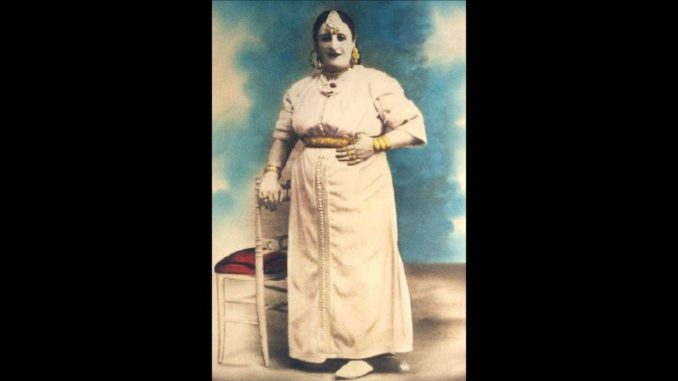
She is one of the oldest Moroccan Jewish voices to have recorded her first works in the 1920s with major retailers of the time, such as Pathé and Gramophone, when women’s access to art was considered by society to be an infamy. It is probably for this reason that Zahra El Fassia was not known by her real name. She settled for the nickname “El Fassia”, in reference to Fez where she spent a big portion of her life and where her artistic career began, not far from the city of Sefrou where she was born in a Jewish family.
El Fassia became known for her mastery of ‘Malhoun’ music in addition to sh’gouri, Ghranati and Tlemçani, as well as some of the popular songs that Moroccans used to hum. She became famous for her song “Hbibi Diyaly Feen Howa” (Where is my lover?) which many voices sang after her, both in Morocco and in the other Maghreb countries. Selim Hilali, an Algerian Jewish artist and lover of Morocco, was the most famous singer who reproduced this song in his own way.
In addition to the traditional songs she has redesigned in her own style, such as the famous song “Hakka Mama”, Zahra El Fassia has a respectable repertoire, including songs such as “Ya mahla wsolkoum”, “Houbbak tallafni ala chghali”; “Ya warda”; “Zad alia laghram”; “Chaalat annar”; “Saadi rin el bareh”; “Lamra el hakma”, all songs that do not lack the unusual audacity of a woman at that time.
Zahra El Fassia’s talent was discovered by the artist Ibrahim El Bacha, the grandfather of the Moroccan artist Mona Asaad, when Zahra left Fez for Rabat, where she settled in the 1940s for a second marriage with a famous Jewish merchant in the capital.
After a first marriage, which resulted in her having two children, she moved to the old town of Casablanca where she lived for many years on the famous “Boutouil” boulevard, making herself known to the bourgeois families of Casablanca, who invited her to sing on their weddings, celebrations and special occasions.
In the early 1960s, Zahra El Fassia immigrated to France and then to Israel with the wave of Jews heading for the Promised Land. She lived in Ashkelon until the end of her life and was forgotten in the art scene for many years before Israeli singer Neta Elkayam brought her authentic songs up to date, with a view to safeguarding the Eastern Jewish artistic heritage in Israel.

Be the first to comment